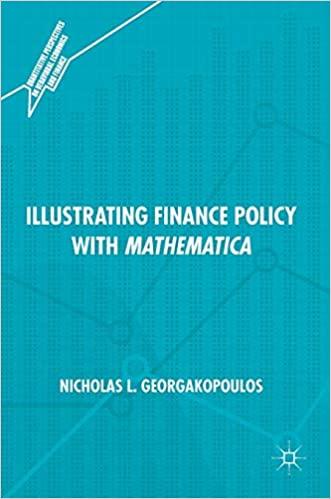Question
Question 1 John Nishiro is the chief risk officer of Axis Corp., a multinational human resource firm. The headquarters of Axis is located in London
Question 1
John Nishiro is the chief risk officer of Axis Corp., a multinational human resource firm. The headquarters of Axis is located in London and hence it reports its financial statements in pounds (GBP).
John is paying attention to two impending large financial transactions in the months ahead:
Axis is going to issue a 1-year note with a face value of USD 100 million in 6 months time for funding needs at its U.S. arm.
Axis is going to repatriate CHF 200 million of profits back from its Swiss operation in 4 months time.
These transactions represent two separate risk issues that John has to decide whether or not to hedge. He scrutinises the market data as presented below:
USD LIBOR Rates (to be used on a 30/360 basis)
| Term (Days) | Rate (%) |
| 30 | 0.9% |
| 60 | 1.0% |
| 90 | 1.1% |
| 180 | 1.2% |
| 270 | 1.3% |
| 360 | 1.4% |
| 540 | 1.5% |
John needs to analyse the situations carefully and then recommend appropriate strategies to hedge currency and interest rate risks to his chief executive officer. As currency and interest rate are regarded as commodity products, financial instruments used to hedge risk are commodity derivatives which include forwards, futures and options. Help John in his analysis of the nature of the commodity price risk and the need for hedging this risk in the upcoming transactions by answering the following multiple choice questions:
(a) John is concerned about the interest rate exposure in the USD note. He needs to assess whether or not to hedge the risk with a forward rate agreement (FRA).
The 6x18 FRA rate that is implied by the USD LIBOR rates is best approximated by
(i) 1.94%
(ii) 2.94%
(iii) 3.94%
(b) John finds a banker who is willing to offer a 6x18 FRA at a rate of 2% for the USD 100 million. If the spot interest rate is 1.9% at maturity, the payoff of this FRA contract, which is settled at expiration, from the banker to Axis Corp. is
(i) 100,000
(ii) -100,000
(iii) 200,000
(c) John notices that the futures contract on GBPCHF is trading below the fair value (i.e. the no-arbitrage futures price) and suspects that an arbitrage opportunity exists and he also notices that the fair value is above the expected spot exchange rate.
Which of the following represents part of the transactions required to make use of the arbitrage opportunity?
(i) Sell pounds and sell GBPCHF futures contracts
(ii) Sell pounds and buy GBPCHF futures contracts
(iii) Buy pounds and sell GBPCHF futures contracts
(d) The difference between the futures price and the expected spot price for GBPCHF in 4 months is most probably due to
(i) backwardation
(ii) normal backwardation
(iii) contango
(e) As the expiry in 4 months approaches, the relationship between the no-arbitrage
futures price and the expected spot exchange rate
(i) closer and closer to each other.
(ii) maintain the same relationship with each other as John initially
observed. (iii) jump randomly around each other.
Step by Step Solution
There are 3 Steps involved in it
Step: 1

Get Instant Access to Expert-Tailored Solutions
See step-by-step solutions with expert insights and AI powered tools for academic success
Step: 2

Step: 3

Ace Your Homework with AI
Get the answers you need in no time with our AI-driven, step-by-step assistance
Get Started


